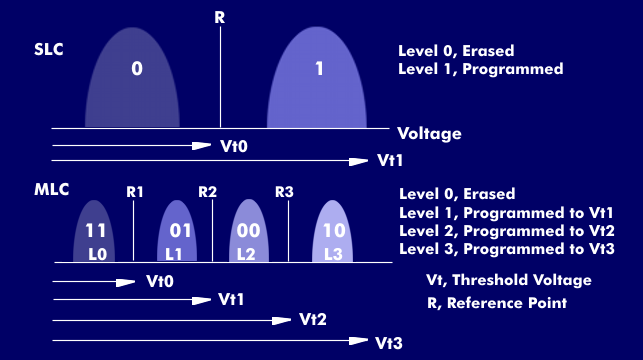single level cell (memory) (SLC)
Single Level Cell (SLC) is a design form of flash memory. In terms of architecture, they are NAND gates that store one bit each. The electrical charge is stored via the floating gate and erased via the source.
The digital information is the stored or the erased charge. If a charge is stored, this corresponds to logic "1", if no charge is present, the state is logic "0".
The NAND flash concept offers high speeds, especially a high write speed, and has a greater number of erase and write cycles compared to Triple Level Cells( TLC) and Multi Level Cells( MLC). One speaks of 100,000 compared to 10,000. In addition, Single Level Cells as NAND flashes have the advantage over NOR flashes that the individual cells require much less space because the cell strings are interconnected.
Solid state drives( SSD) work with single level cells because of the higher data rates.

